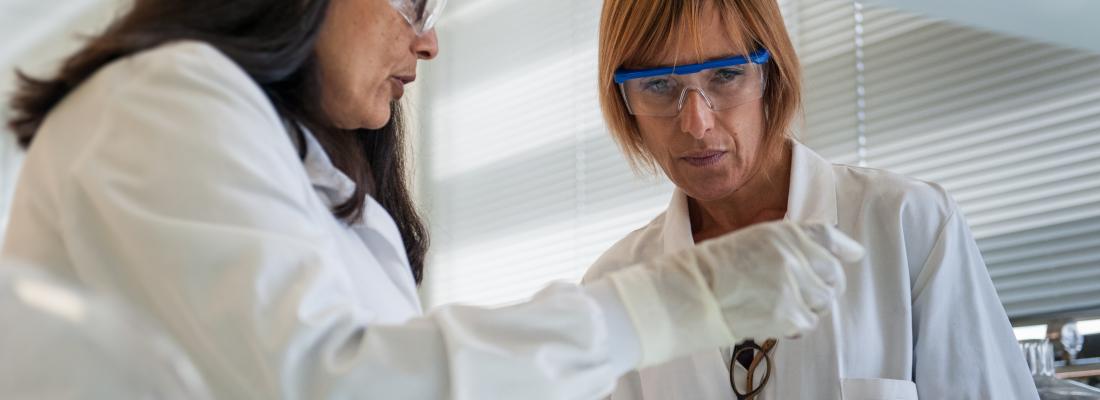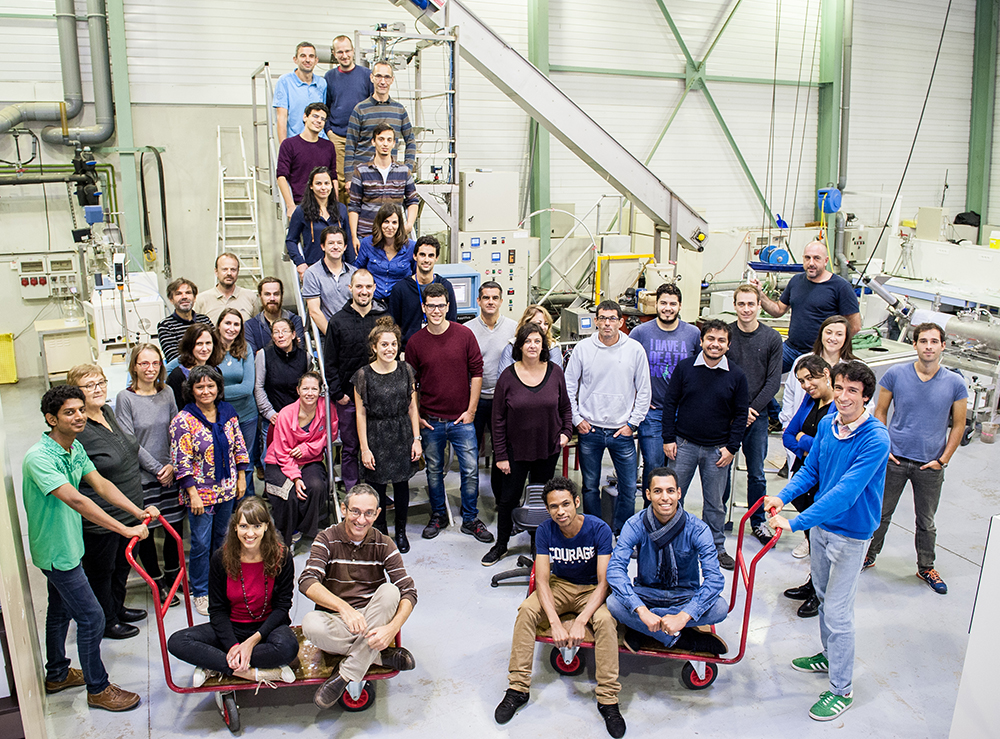Bioeconomy 3 min
Waste not, want not
LBE is a pioneer in pollution removal in agricultural waste and in the optimisation of these processes to produce methane, a biofuel that is now an option in today’s energy mix. The Laboratory for Environmental Biotechnology (LBE) (1) is currently focused on transforming emissions from human activities into resources. It pays careful attention to societal goals for a more sustainable future, and works closely with industry to develop the innovation needed for a greener economy.
Published on 20 November 2017

With 50 to 60 articles published annually in the best scientific journals, the LBE is number one on the world stage in the field of methane production (a.k.a. anaerobic digestion), ahead of the Technical University of Denmark and research efforts in China. This leadership began 30 years ago and continues with major scientific advances in the development of large-scale systems (e.g. pre-processing of organic matter, biofilm reactors, modelling and processes) and in microbial community ecology. In 2015, nearly 10% of methane production system sales in France, in terms of installed electrical power, were made by Naskeo, a start-up created in 2005 from an LBE patent on the anaerobic treatment of waste water. Using a second LBE patent, the young start-up expanded its activities to include solid waste and optimise methane production. Thanks to public policy measures to encourage methane production (2006, 2011 and 2013), these activities became economically viable.
With 50 to 60 articles published annually in the best scientific journals, the LBE is number one on the world stage in the field of methane production (a.k.a. anaerobic digestion), ahead of the Technical University of Denmark and research efforts in China. This leadership began 30 years ago and continues with major scientific advances in the development of large-scale systems (e.g. pre-processing of organic matter, biofilm reactors, modelling and processes) and in microbial community ecology. In 2015, nearly 10% of methane production system sales in France, in terms of installed electrical power, were made by Naskeo, a start-up created in 2005 from an LBE patent on the anaerobic treatment of waste water. Using a second LBE patent, the young start-up expanded its activities to include solid waste and optimise methane production. Thanks to public policy measures to encourage methane production (2006, 2011 and 2013), these activities became economically viable.
Turning a problem into a resource
LBE reached a turning point ten years ago when it found a way to transform waste into resources other than biogas. Welcome to the world of environmental biorefinery! In addition to methane, our researchers and engineers are working on projects for hydrogen production, the development of bacteria batteries, and the use of microalgae at water treatment facilities to reduce energy bills. Other applications are designed for agriculture: water can be cleaned of the carbon, phosphorus and nitrogen it contains, but if the water is then used for irrigation, why not keep in it the dose of nitrogen and phosphorus that is beneficial for farming? Similarly, once any significant or trace pollutants such as pesticides, heavy metals or pathogens are removed, residual digestates of fermentation or methane production can be spread over fields. Julie’s research in process engineering, for example, aims at adjusting the composition of these digestates to suit different types of crops. And upstream of that, high added-value components for the agro-food and green chemistry industries can sometimes be extracted.
Unveiling innovative opportunities with civil society and economic partners
Innovation is in our genes
“Innovation is in our genes”, says Dominique, whose research focuses on processing medical residue. Technology transfer is another essential feature of LBE, and its technology center, which earned a European Union label (2), embodies this double role. The center is next to the university institute of technology where the LBE teaches courses, and the business incubator where BioEnTech, a start-up created using LBE and INRIA technology for methane production systems, pursues its development. Innovation also springs from joint research with industry. This is the credo of Diana, who spent 15 years in industry before taking up management of the technology center. Current projects include efforts to upcycle corn and bran residue (3). Fractionation, solid waste treatment, extraction, proteins, social acceptability... “INRA stands out for its ability to combine expertise from a network of laboratories in order to process an entire value chain”, she explains. “The goal is to make pollution removal compatible with the financial imperatives of industry and the growing demand in society for biosourced products”. At the same facility, Romain heads the INRA Transfer Environment (ITE): “An offshoot of LBE, this entity provides services to industrial companies. When requests raise research-related issues, these are transmitted to the LBE.”
Shaping one’s knowledge – and interdisciplinarity – through travel
When Nicolas, the lab’s director, describes his team, he moves around the globe, citing Latin America, Europe, North Africa and Asia. What brings this diverse mix of people to the LBE, a “little French village” in Narbonne, far from major campuses, as Kim, an American trained microbiologist, describes it? The areas of study, the scientific attributes of the lab, recommendations of numerous alumni who conducted their thesis or post-doc work there or made professional connections. A “LBE Alumni” group, created only recently on LinkedIn, already has nearly 60 members. It is quite the “big family”: the lab’s manageable size encourages interaction and offers much flexibility. Thesis work is supervised by scientists from several disciplines; this is the case for Roman, whose work combines fermentation, electrochemistry and modelling. This tradition of interdisciplinarity was cultivated by René Moletta, who headed the laboratory until the year 2000. Today, the lab’s “thematic” structure facilitates synergies and the acquisition of a common language between disciplines. As Audrey, an engineer at the lab explains, LBE dynamism also stems from its “focus on pertinent issues: the environment and the circular economy”, which are of great importance to civil society and promoted through public policies, including those of the Narbonne region, which would like to acquire the first “positive energy” label.

(1) The award is given to the entire LBE team, even if only a few members’ first names are mentioned in this portrait.
(2) Label: Key Enabling Technologies (KETs) Technology Center
(3) This is a joint project between INRAE’s Fungal Biodiversity and Biotechnology joint research unit (INRAE Aix-Marseille Université and Polytech Marseille BBF) and the Biopolymers, Interactions and Assemblies (BIA) unit in Nantes.
|
|
